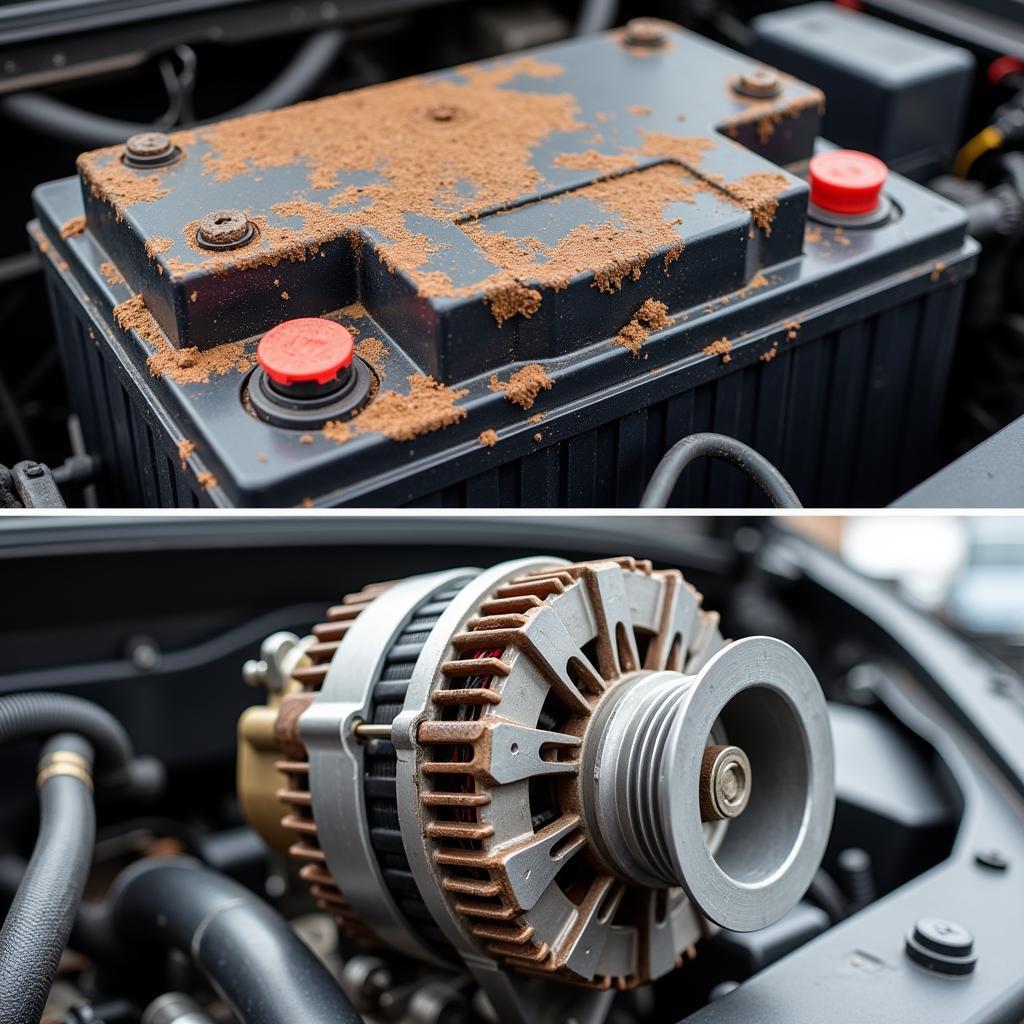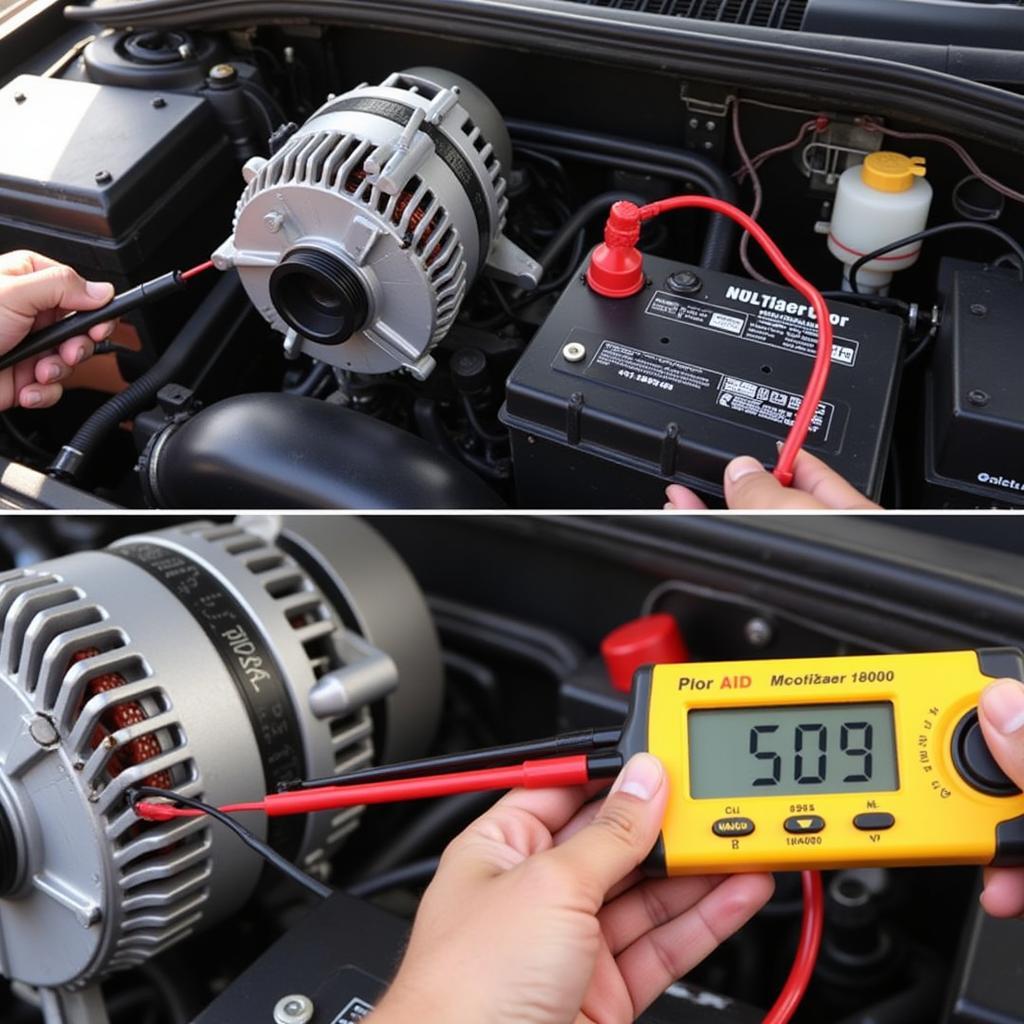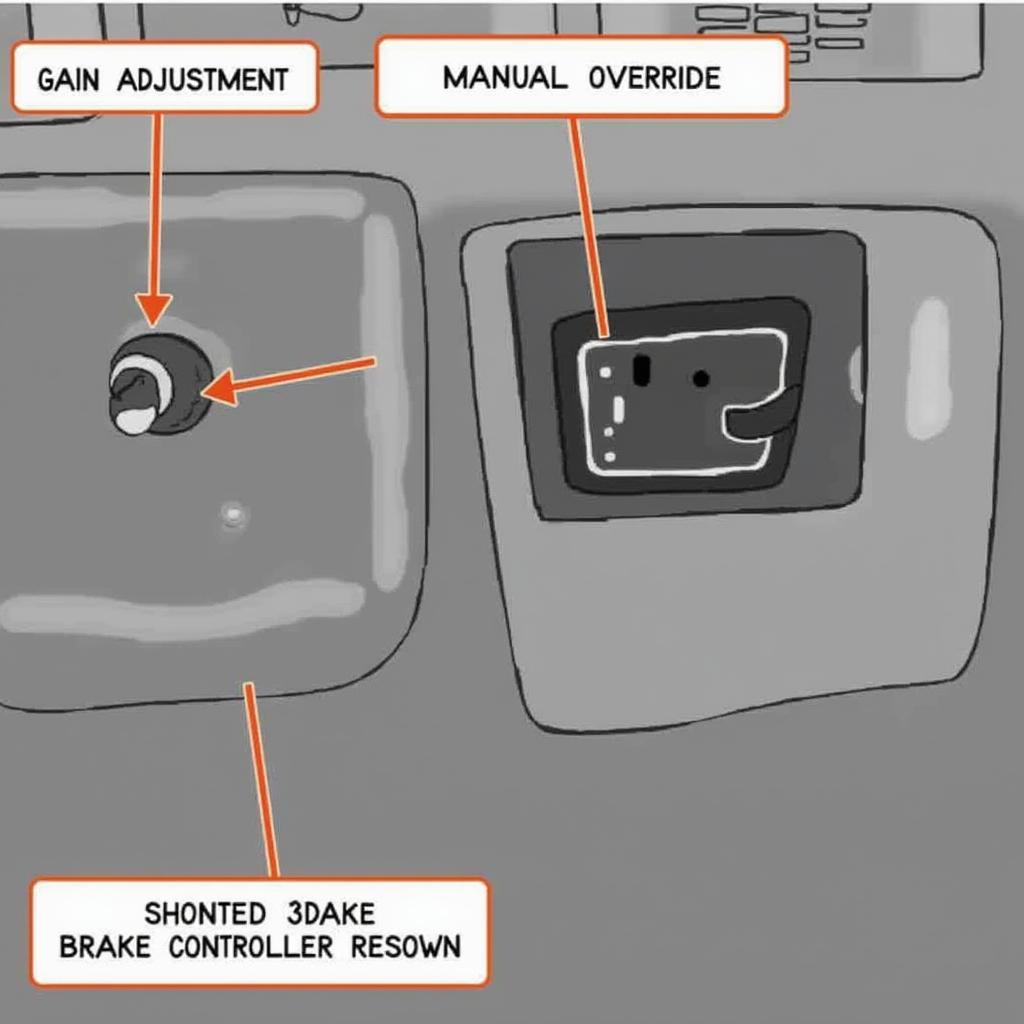A dead car battery can ruin your day, but a faulty alternator can lead to a series of escalating issues. Knowing the difference between a bad alternator vs battery is crucial for a quick and effective fix. This article will guide you through diagnosing and troubleshooting whether you have a bad alternator or a bad battery.
 Bad Alternator vs Bad Battery Symptoms
Bad Alternator vs Bad Battery Symptoms
Identifying a Bad Alternator: Beyond the Dashboard Light
While a glowing battery light is often the first sign, it’s not always indicative of a bad battery. It can also signal a failing alternator. The alternator, the heart of your vehicle’s electrical system, recharges the battery and powers all electrical components while the engine is running. A malfunctioning alternator can leave you stranded with a dead battery. So, how can you tell the difference?
Common Signs of Alternator Failure
- Dim or flickering headlights: A failing alternator struggles to provide consistent power, leading to fluctuations in headlight brightness.
- Dashboard warning lights: The battery light is the most obvious, but other warning lights, such as the check engine light, might also illuminate.
- Strange noises: Whining or grinding sounds from the engine compartment can indicate worn alternator bearings.
- Electrical issues: Problems with power windows, radio, or interior lights can point to a failing alternator.
- Dead battery: If your battery repeatedly dies even after jump-starting, a faulty alternator might be the culprit.
 Testing Car Alternator with Multimeter
Testing Car Alternator with Multimeter
Recognizing a Bad Battery: More Than Just a Slow Start
A bad battery can also cause a variety of problems, some mimicking alternator failure. Understanding the signs of a bad battery is essential to avoid misdiagnosis and unnecessary repairs.
Symptoms of a Bad Battery
- Slow engine crank: The engine struggles to turn over, especially in cold weather. dead battery provides more information on dealing with this issue.
- Clicking sound when starting: This indicates low battery voltage, preventing the starter from engaging.
- Swollen battery case: Excessive heat can cause the battery case to bulge or crack, indicating internal damage. car battery overheat delves into the causes and solutions for this problem.
- Old age: Batteries typically last 3-5 years. If yours is older, it’s more susceptible to failure.
Bad Alternator vs Battery: The Jump Start Test
One common way to differentiate between a bad alternator and a bad battery is the jump start test. signs of bad battery vs alternator offers a more in-depth explanation of this procedure. If your car starts after a jump but dies shortly after, the alternator is likely the issue. If the car doesn’t start or continues to struggle even after a jump, the battery is probably at fault.
Is My Alternator Bad or Battery: Further Diagnostics
While the jump start test can provide initial clues, more thorough testing is recommended for accurate diagnosis. Using a multimeter to check the battery and alternator voltage can confirm the problem. is my alternator bad or battery guides you through the steps involved. For example, a charging voltage significantly lower than 13.5 volts usually indicates a failing alternator.
“A common mistake is assuming the battery is the problem when the car won’t start,” says automotive expert, John Smith, ASE Certified Master Technician. “Always test both the battery and alternator before replacing either component.” Remember, misdiagnosis can lead to unnecessary expenses and further frustration.
Addressing Specific Vehicle Issues: An Example
Certain car models may exhibit unique symptoms related to charging system problems. For instance, a mini cooper battery not charging warning could be due to various reasons, from a faulty alternator to wiring issues. Understanding your vehicle’s specific tendencies is essential for effective troubleshooting.
“Don’t hesitate to seek professional help,” advises Jane Doe, an Electrical Systems Engineer specializing in automotive diagnostics. “A qualified technician can quickly pinpoint the issue and perform the necessary repairs, saving you time and potential headaches.”
Conclusion: Keeping Your Car Powered Up
Understanding the difference between a bad alternator vs battery is essential for every car owner. By recognizing the signs and performing simple tests, you can diagnose the problem accurately and avoid costly mishaps. Regular maintenance, including battery and alternator checks, can also prevent unexpected breakdowns and keep your vehicle running smoothly. Remember to always prioritize safety and consult a professional when needed.
FAQ: Frequently Asked Questions
-
How long does an alternator last? Alternators typically last between 7 and 10 years, but their lifespan can vary depending on usage and environmental conditions.
-
How much does it cost to replace an alternator? The cost can range from $200 to $700, depending on the make and model of your vehicle.
-
Can I drive with a bad alternator? You can drive for a short distance, but the battery will eventually drain, leaving you stranded.
-
How much does a new car battery cost? Car batteries typically cost between $80 and $250.
-
How often should I replace my car battery? It’s generally recommended to replace your car battery every 3 to 5 years.
-
Can a bad alternator damage the battery? Yes, a failing alternator can overcharge or undercharge the battery, shortening its lifespan.
-
What are the signs of a bad voltage regulator? Symptoms of a bad voltage regulator, a component within the alternator, include dimming headlights, flickering dashboard lights, and overcharging or undercharging the battery.

